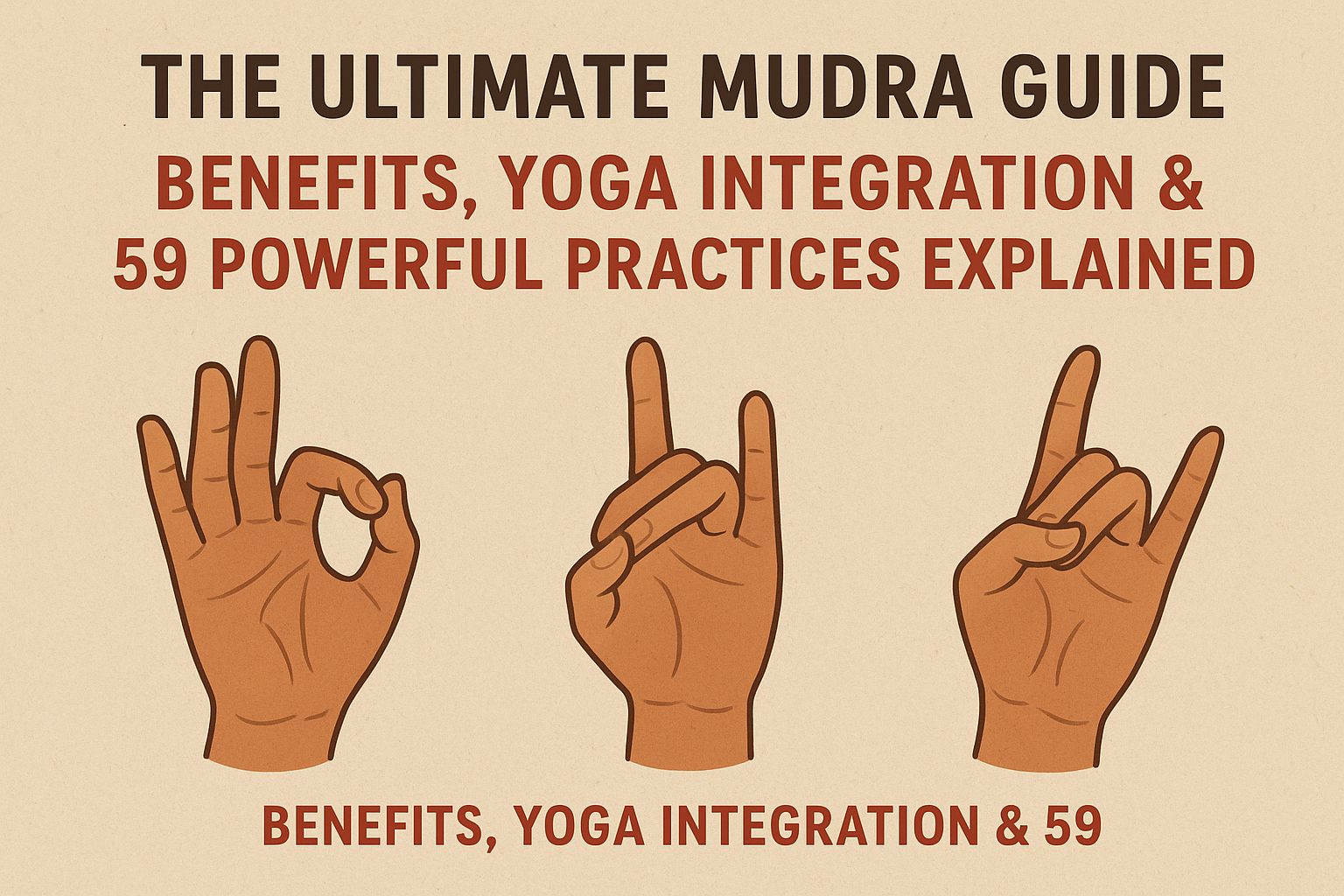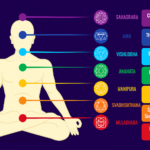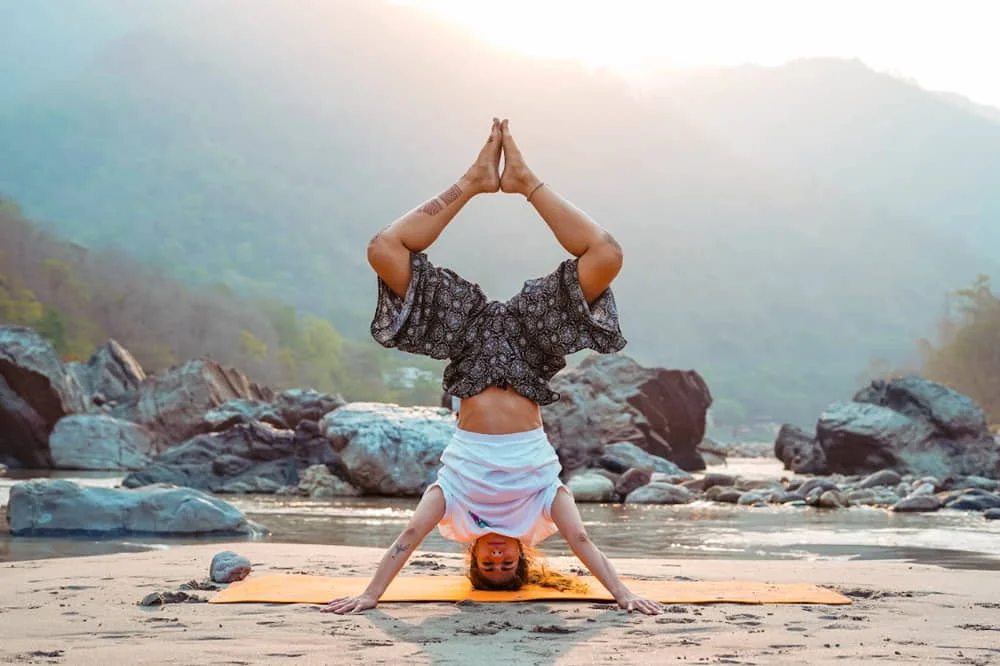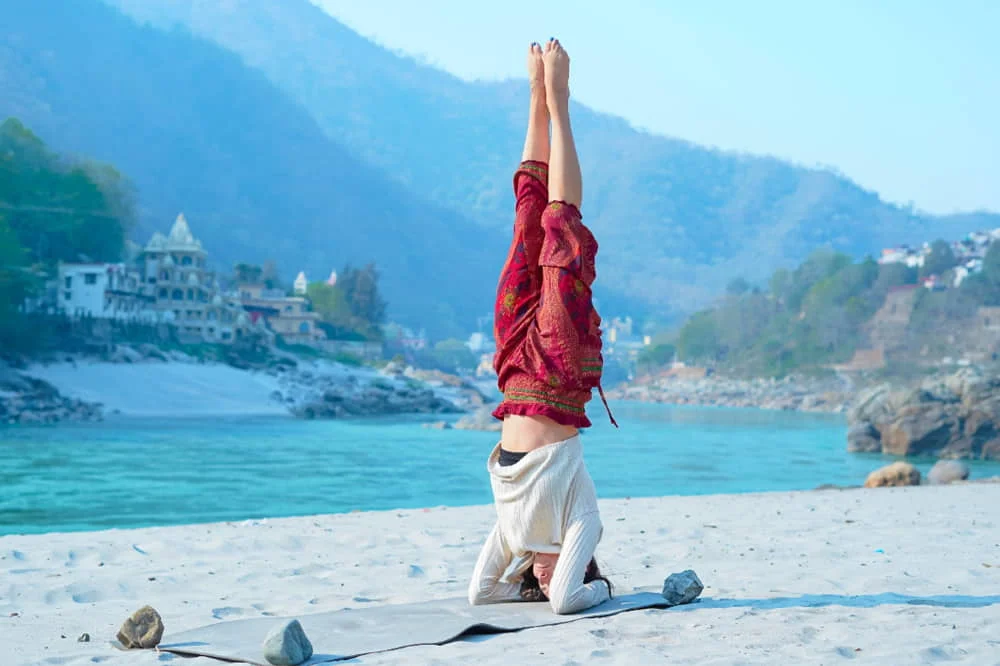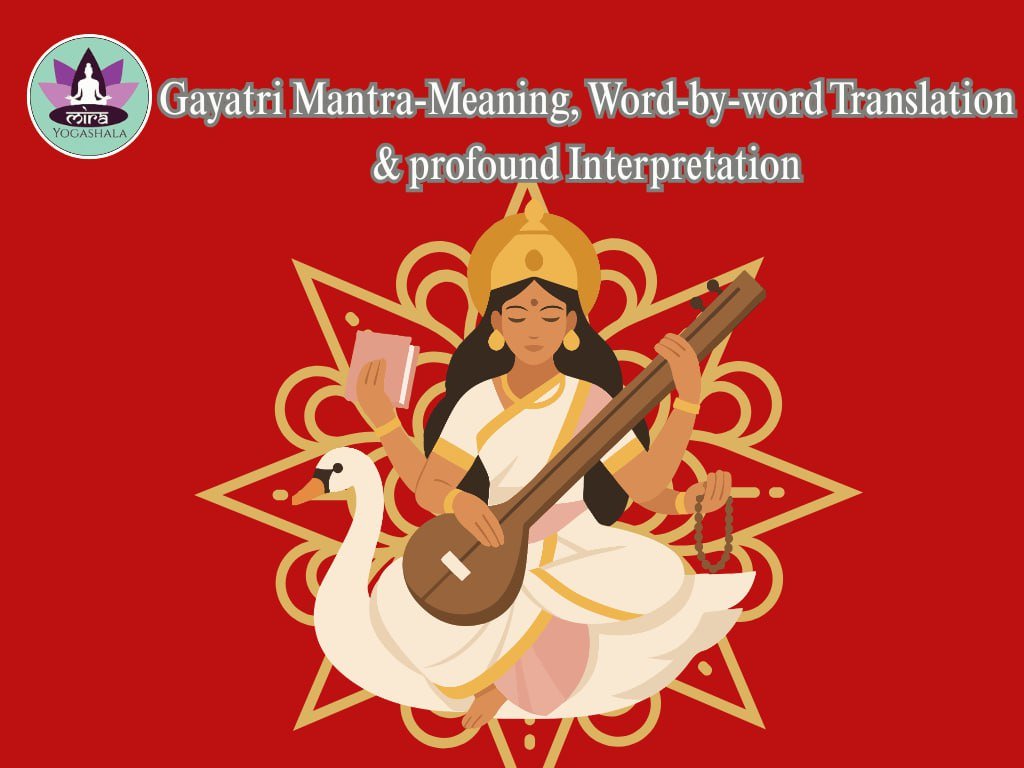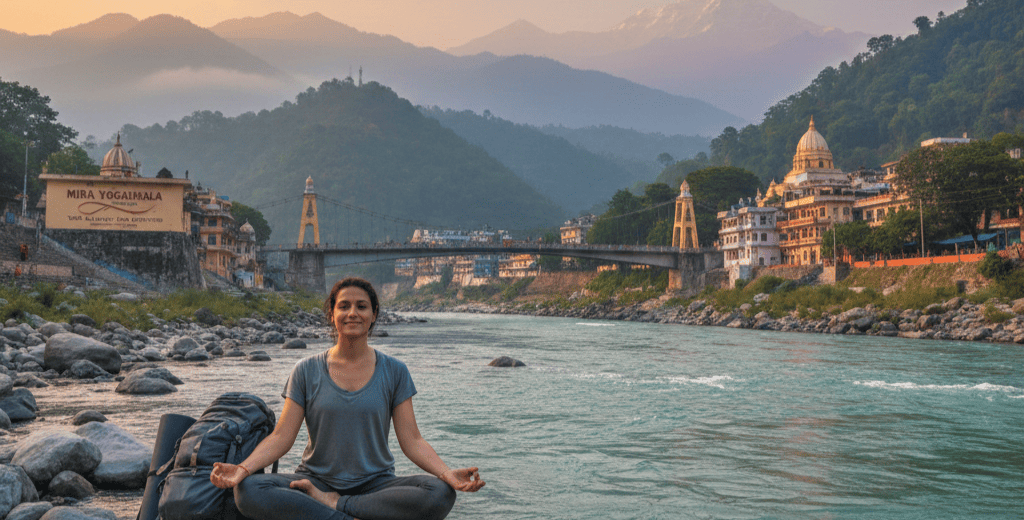Introduction of Yoga Mudras
Mudras are made by different parts of the body, and are a kind of sign language or code without words. These particular Yoga mudras used in hand positions that have been employed from time immemorial. Each kind of movement has meaning that is more than just movement and they are powerful tools for directing energy, clearing the mind, and also focusing.
With regular practice, Yoga Mudras assist in balancing the mind and body. They support overall health, encourage focus, and also promote relaxation. Yoga Mudras are beneficial for the body as well as the mind, as they balance the connected elements within the body, and they also establish contact with the earth and the air. They’re sort of a logical extension and wellness because they’re both radical and also simple — and can be done anywhere, at any time.
Join Our Certified Yoga teacher Training Courses in Rishikesh
What Are Mudras in Yoga?
The word “mudra” is Sanskrit for “seal,” “mark,” or “gesture”. In yoga, these are the physical positions — usually for the hands — that act as energetic seals. When practicing to make these seals, you guide prana along certain channels in your body, while at the same time you’re working on the nervous system, benefiting balance and focus, and also deepening your meditation.
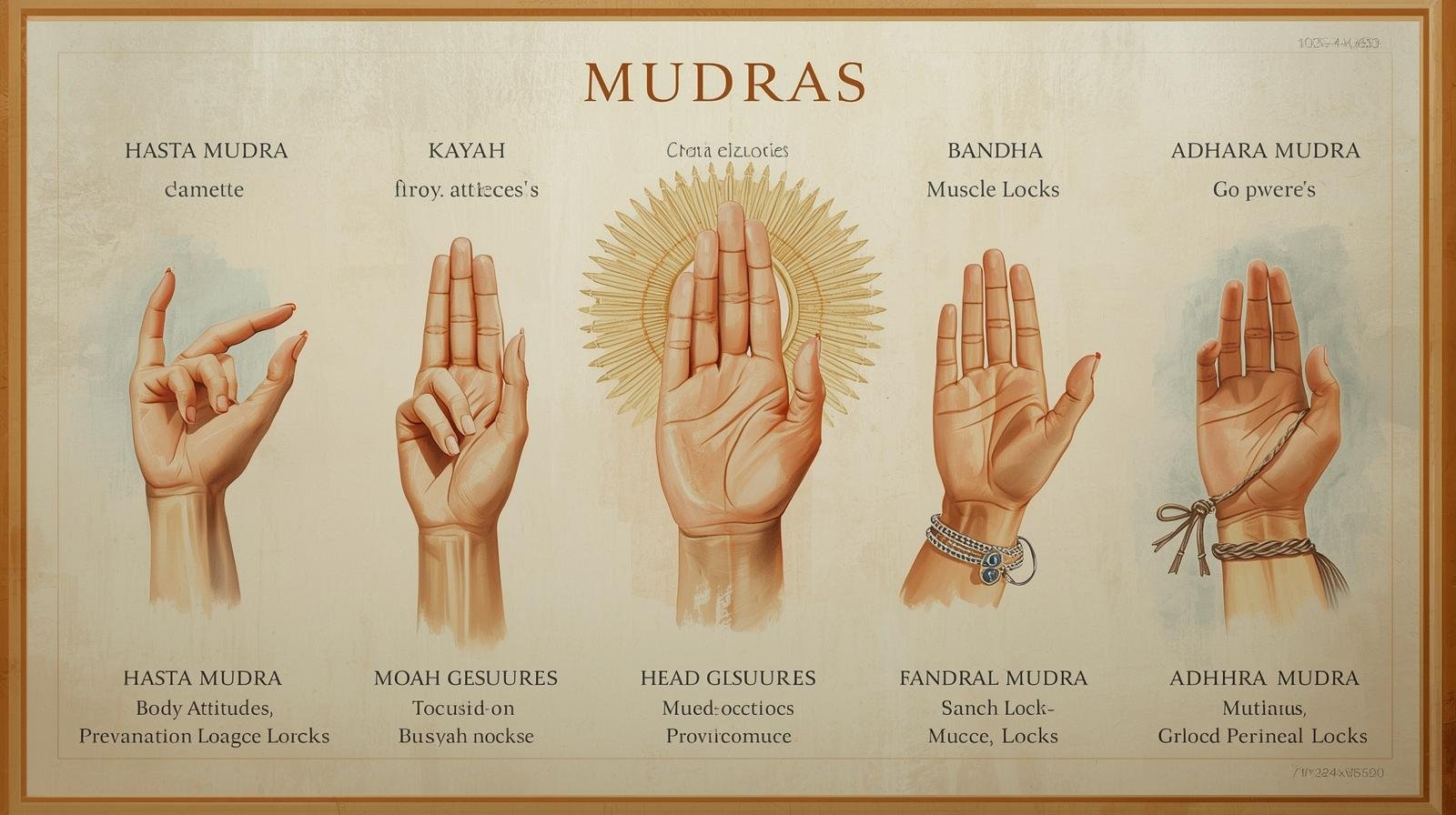
Hand mudras aren’t the only ones out there. Traditional texts mention five kinds of mudras:
- Hasta Mudra (Hand Gestures)—performed using fingers and palms, is the most commonly followed.
- Kaya Mudra (Body Attitudes)—symbolic gestures that involve the entire body.
- Manah Mudra (Gestures of the Head): By the eyes, nose, lips, and tongue.
- Bandha Mudra (Locks)—a mudra that interacts with the locks of muscles.
- Adhara Mudra (Perineal Locks)—the use of perineal muscles to circulate energy.
Of all of these, hand mudras are easiest to access. If all you have are your hands, focus, and steady breath, it’ll suffice.
Meaning and significance of Yoga Mudras
“Mudra” is a Sanskrit term described from the expression “Mudam anandam dadati iti mudra,” which means “that which gives joy or bliss.” Ancient texts like the Kularnava Tantra go on to break it down as mudam ,meaning “bliss” and drava, meaning “to draw forth.” They both point us to the conclusion that mudra is a means to bring to life the joy that lies dormant within us.
When an individual assumes mudra, the prana (life energy) moves in an ordered way in the body. The longer the gesture, the more fluid and sonorous this current becomes. This continuous infusion of energy changes the state of mind spontaneously, and also making it calmer, balanced, and full of inner peace.
While yoga is perhaps the most common type of practice to try featuring mudras, they are not limited to yoga. as well as They found in various spiritual and cultural traditions, including but not limited to Hinduism, Buddhism, and Jainism, in which they have representative meanings in temple and worship practices, classical dance, and are an accompaniment to certain forms of ritual chanting and also mantra. This proves that mudras are not a physical move, but they link art with humanity and the inner self.
The Elemental Basis of Mudras
According to Ayurveda, the human body is made up of five elements:
- Thumb—Fire (Agni)
- Index finger- Air (Vayu)
- Middle Finger-Space (Akasha)
- Ring Finger-Earth (Prithvi)
- Little Finger=Water(Jal)
When these elements fall out of balance, disease or mental unrest appears. By adopting different mudras positions, we can increase, decrease, or balance the flow of each element in the body.
For Example
- Touching the thumb (fire) to the index finger (air) as in a Gyan Mudra helps balance air and refocus energies.
- Jagat Prakash: Ok, we’re in Surya Mudra and pressing the thumb with the ring finger.
The esoteric science behind mudras is what makes it such a powerful healing technique and also , extending to encompass both physical health and as well as mental clarity.
How Do Mudras Work?
Mudras operate on both physical and energetic principles.
Neuro-muscular response: The fingertips are also full of nerve endings. Pressing or combining them activates feedback loops in the nervous system, calming thoughts and improving the ability to focus.
Energy circuits: According to yogic philosophy, the body is made up of a grid of nadis (tunnels of energy). Mudras seal in prana, and hold it within our body, and take it where we need to.
Balancing of elements: Through the placement of one’s fingers in various hieroglyphic patterns (mudras), the balance of elements in the body is reputed to be restored, promoting health and also mental stability.
Subtle awareness: When practising mudra, sensitivity towards inner energy flows within increases, and meditation becomes more intense.
In elementary language, mudras are like switches. When you hold your hands in a particular position, you switch on pathways for guiding energy, in the same way the flow of electricity ensures when a circuit is closed.
Benefits of Practising Mudras
Regular practice of yoga mudras offers a wide range of benefits:
Physical Benefits
- Increases metabolism and Digestion
- Maintains Blood Pressure level
- Decreases inflammation and chronic pain
- Boosts Immunity
- Promotes weight control
Mental Benefits
- Reduces Tension and anxiety
- Improves concentration and focus
- Improves creativity and memory
- Supports deeper sleep
Spiritual Benefits
- Enhances meditation
- Balances the chakras
- Brings about an awakening of inner consciousness
- Enhances the relationship with higher consciousness
The simplicity of mudras- you can perform them while sitting, meditating, or even while walking-is what makes them so amazing.
Important Mudras of Yoga and Their Benefits
Here are the most important mudras of yoga, especially for beginners and daily practice:
- Gyan Mudra (Mudra of Knowledge)
- Mudra: These two fingers touch the tip of the thumb, keeping the other two fingers straight, and palm facing upwards.
- Benefits: Enhances memory and concentration, and promotes centring; soothes the nervous system; supports meditation.
2. Vayu Mudra (Mudra of Air)
- Mudra: Bend the index finger to touch the base of the thumb; apply gentle pressure with the thumb.
- Benefits: Regulates excess air; alleviates anxiety, joint pain, and digestive problems.
3. Agni Mudra (Mudra of Fire)
- Mudra: Fold ring fingers and press with thumbs.
- Benefits: Boosts metabolism, aids in Digestion, eases sluggishness, aids in maintaining a healthy weight.
4. Prithvi Mudra (Mudra of Earth)
- Mudra: Close the tip of the ring finger with the tip of the thumb.
- Benefits: Increases immunity, stability, and stamina; assists with tissue repair.
5. Varun Mudra (Mudra of water)
- Mudra: The Thumb is touching the tip of the small finger.
- Benefits: Neutralises water element; moisturises; promotes health and purification of the skin and blood.
6. Shunya Mudra(Mudra of Emptiness)
- Mudra: Fold the middle finger of your hand and press it on the base of the thumb.
- Benefits: Aids with earaches, vertigo, hearing problems, and throat conditions.
7. Sun-Mudra (Mudra of the Sun)
- Mudra: Bend the other fingers straight and press the ring finger with the thumb.
- Benefits: Speeds up metabolism, helps with weight loss, and lowers cholesterol.
8.Prana Mudra (Mudra of Life)
- Mudra: The Tips of the ring finger and little finger join the thumb.
- Benefits: Promotes the strength of the heart, liver, and kidneys, Hairdressing, and Whitening drink.
These mudras are very easy to do but are extremely powerful. Just 15–20 minutes of working with them each day can yield significant benefits for health and clarity.
7-Healing Mudras for Chakra Balancing
Mudras have a powerful effect in balancing the chakra system and the inner body. The energy centers of the body are called chakras. Seven chakras are aligned with the spine; they encompass spiritual, emotional, psychological, and physical facets of our human capabilities.
Therefore, any blockage or malfunction within the chakra system can cause physical, mental, and emotional dysfunctions. By influencing the energy in the body, chakra mudras can assist you in bringing balance to your energy system and creating healthier quality of life.
- Root Chakra (Muladhara) → Prithvi Mudra for grounding
- Sacral Chakra (Svadhishthana) → Varun Mudra for fluidity and creativity
- Solar Plexus Chakra (Manipura) → Agni Mudra for personal power and Digestion
- Heart Chakra (Anahata) → Vayu Mudra for compassion and balance
- Throat Chakra (Vishuddha) → Akash Mudra for expression and space
- Third Eye Chakra (Ajna) → Hakini Mudra for clarity and intuition
- Crown Chakra (Sahasrara) → Dhyana Mudra for meditation and spiritual connection
When practised mindfully, mudras can clear blockages and restore balance to the subtle energy system.
Integrating Mudras into Yoga Practice
Mudras are versatile and can be combined with other yogic techniques:
- With Asanas
Tadasana (Mountain Pose) with Anjali Mudra for grounding
Lotus Mudra, while in Padmasana, for compassion
Chin Mudra with seated meditation for clear-headedness
2. With Pranayama
Chin Mudra in Nadi Shodhana (alternate nostril breathing)
Prana mudra while doing deep breathing with the diaphragm
3. With Meditation
Dhyana Mudra for stillness
Gyan Mudra for insight
Hakini Mudra for focus
4. With Mantras
Singing mantras as you use mudras increases the power of your mantras, stimulating subtle energy points in the palate and in the nervous system.
How to Practice Yoga Mudras
Mudras are generally practiced with other practices such as meditation, pranayama, and specific yoga postures to help focus awareness and stability in the body ,mind and also for longer periods. Their aim, often, is spiritual: focus, balance, and also inner stillness.
Start by sitting in a comfortable and upright position. Classical poses such as sukhasana (easy pose), padmasana (lotus), or vajrasana (thunderbolt pose) are good ones, but you may also sit on a chair if sitting on the floor comes hard for you.
Prepare your hands before making a mudra. Rub your hands together until they are warm. This basic movement is related to the nerve cells of the fingertips, and it awakens the touch sensitivity. And rest your hands on your thighs for a bit and allow the tension to leave and the energy to flow open, with your palms facing up.
From there, slowly start to bring your fingers into the mudra of your choice and The hands are comfortably positioned on the knee or thigh. Don’t be alarmed if the free fingers aren’t perfectly straight — they’ll naturally want to relax over time. Now apply light pressure at the point where your fingers meet; press too heavily, and you’ll draw the mind away, limiting the benefit.
Beginners should ideally aim to hold each mudra for roughly five minutes at a time. As you become more acclimated, you can even lengthen it to 15–20 minutes or more. The results are increasingly pronounced with regular and patient application.
Are Mudras Scientifically Proven?
Yes, recent studies are now beginning to confirm what yogis have been doing for centuries as well as Research on fixed mudra practice demonstrates that the physical posture (and thereby energy flow) created by the gesture has an effect that can be measured and shown to have therapeutic potential.
One research published by S-VYASA University in India studied the effects of a 20-minute practice of Prana Mudra. Via a technique known as Electrophotonic Imaging (EPI), it was found that there was a rapid change between “finger to fingertip,” which can be seen in the image below, provided by EPI, whereby the resulting data ends up being (puff*) photographed, and immediately so: the participants who held the mudra for ten minutes rapidly showed increased energy activity at the fingertips when compared to the control group, who sat quietly. The EPI measurements have been shown to represent alterations of the metabolic rate and also general vitality in the body.
These findings point to the fact that mudras are more than just for symbols also they influence the flow of energy in the body and can promote physical health and also mental balance.
A Spiritual Space for Mudra Practice
The practice of mudras becomes even more profound when explored in a sacred setting. A yoga school in Rishikesh, such as Mira Yogashala, offers not only the discipline of technique but also the spiritual atmosphere of the Himalayas and the Ganga. Here, mudras are taught as more than physical gestures—they are also seen as doorways to inner stillness and higher awareness. Learning in such an environment allows practitioners as well as connect deeply with the ancient roots of yoga while experiencing the subtle energy shifts that mudras awaken.
Conclusion
Yoga mudras in yoga are not just gestures on the mat; they are also for transformation. They can be incorporated into everyday life by anyone who becomes familiar with their elemental affinities and the benefits they confer.
Begin with the key mudras of yoga practice called Gyan Mudra, Vayu Mudra, Agni Mudra, Prithvi Mudra, Varun Mudra, Shunya Mudra, Surya Mudra, and Prana Mudra. As you progress, you will find a larger collection of 59 strong mudras that each work to balance the flow of energy to enhance health and well-being.
Ease, subtlety, and depth—mudras are here to remind us that acts as small as this can offer tremendous results

